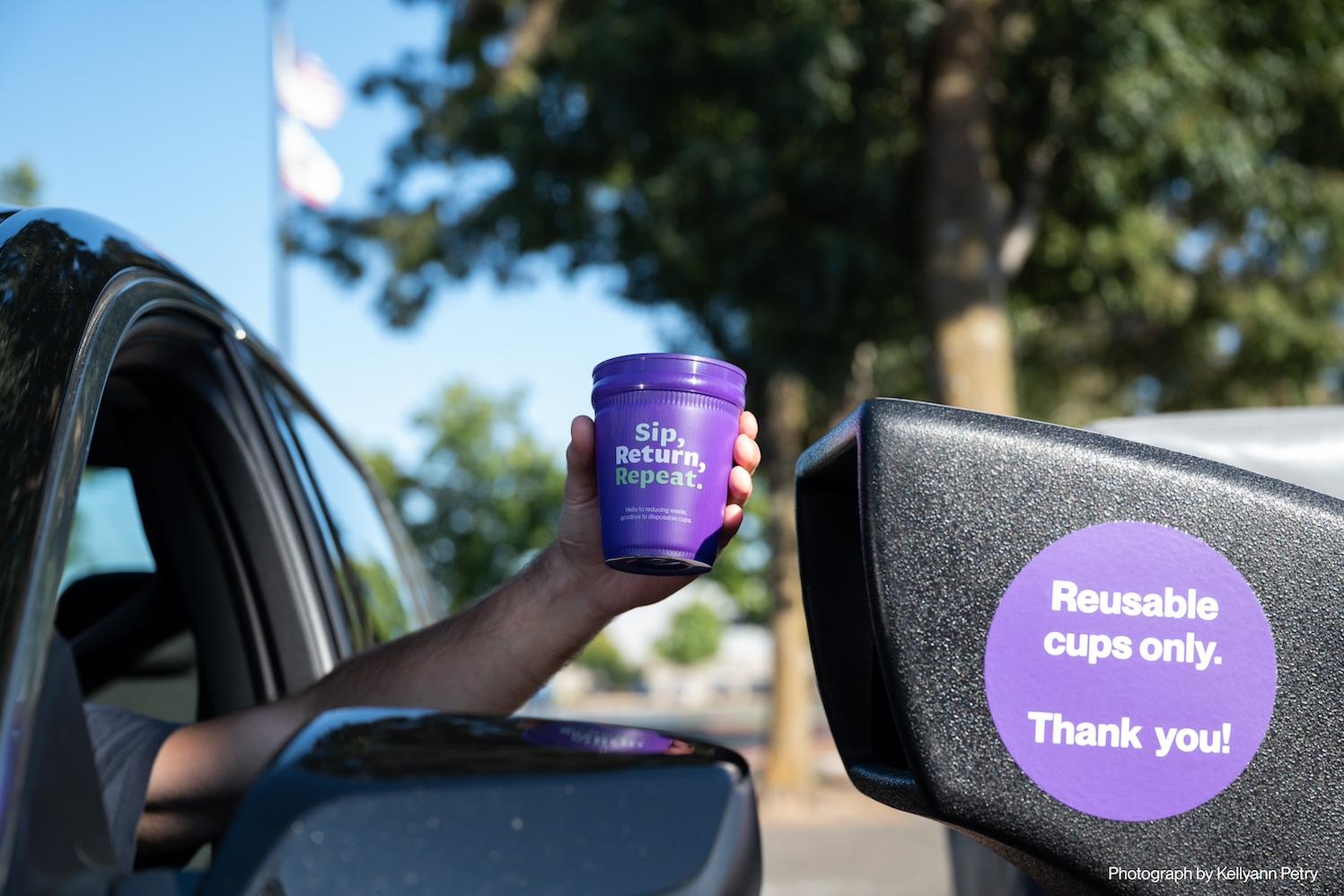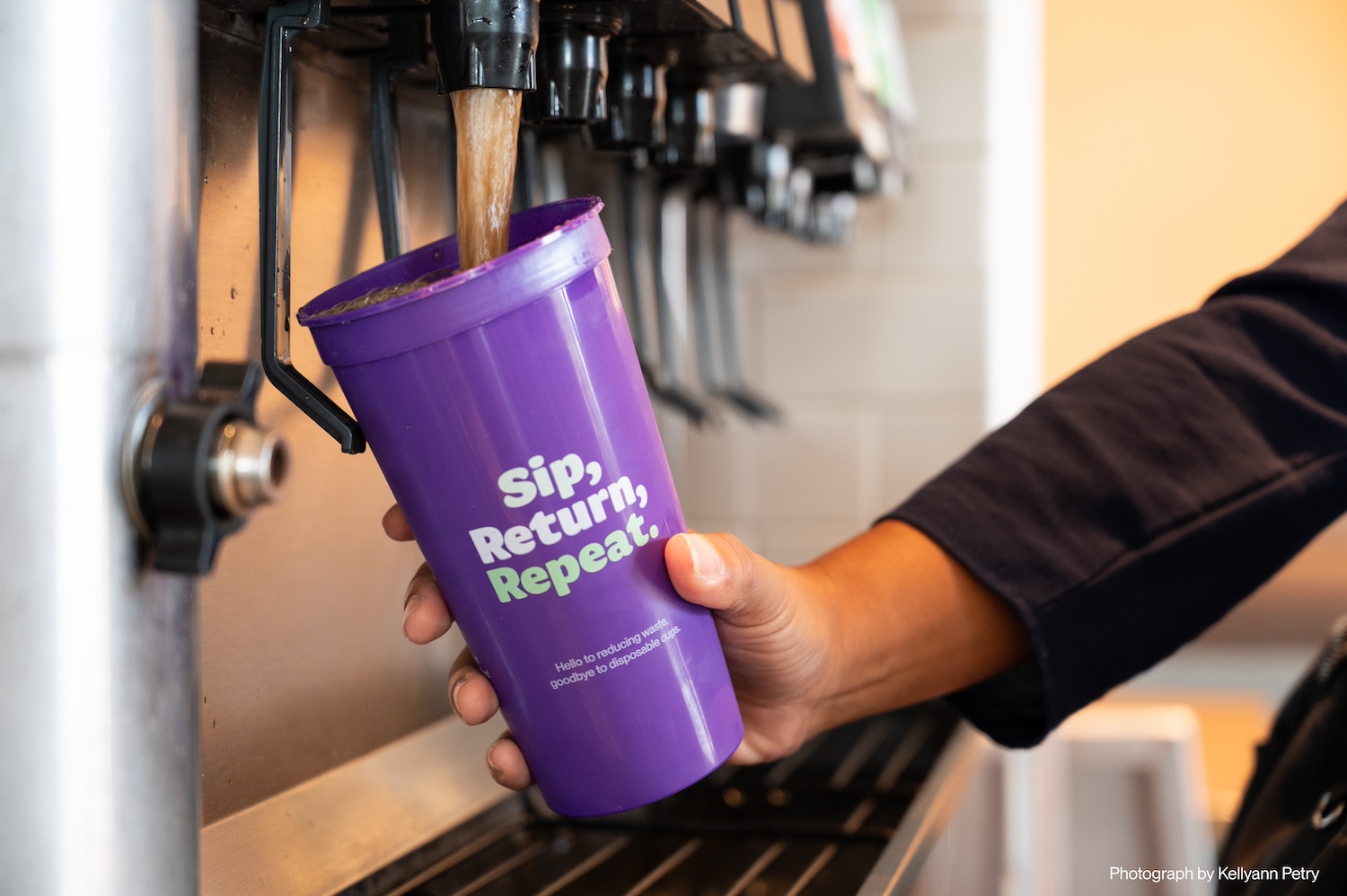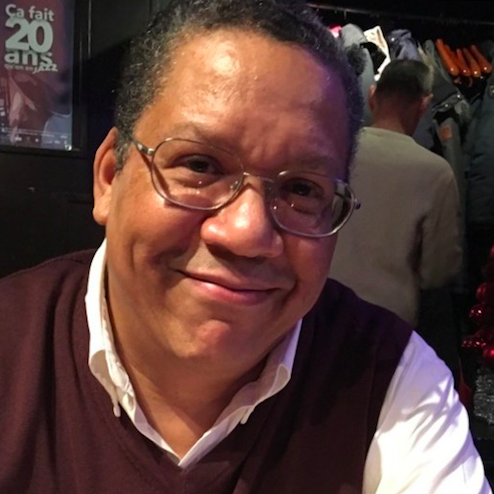
In a city-wide collaboration, reusable cup infrastructure was placed around the city of Petaluma, California, for a three-month pilot project testing the viability of a large-scale reuse system. (Image: Kellyann Petry for Closed Loop Partners)
In 2024, 30 businesses across Petaluma, California, teamed up to swap disposable to-go cups for durable, reusable ones. Organizers of the Petaluma Reusable Cup Project say the project’s success indicates a promising future for reuse systems at scale.
“This was the first United States initiative to offer reusable cups as a to-go option across multiple restaurants in one city,” said Carolina Lobel, senior director at Closed Loop Partners’ Center for the Circular Economy, the organization behind the reuse project. “Customers ordering from any of the 30-plus participating restaurants automatically received beverages in reusable purple cups — no sign-up, deposit or app required.”
During the three-month project, residents and visitors returned roughly 220,000 reusable cups — 51 percent of the total number distributed — surpassing the environmental breakeven point, a metric indicating the point that reuse begins to outperform single-use options in terms of sustainability, Lobel said. Participation, public awareness, and overall positive consumer sentiment were all high, with 85 percent of surveyed residents saying they were proud Petaluma piloted the project.
The effort was led by the Center for the Circular Economy and the NextGen Consortium, its innovation arm that works with major foodservice brands. The project brought together the city of Petaluma’s municipal government, operational partners, and local businesses and organizations. The goal was to make reuse easy, convenient, and intuitive by embedding it into daily routines, Lobel said.
Instead of asking customers to opt into a program, the system was automatic: If someone ordered a to-go drink at one of the participating businesses, they received a reusable purple cup. Once used, the cup could be returned to any of more than 60 stations across the city in parks, restaurants and drive-throughs. The program didn’t feature any user fees, penalties or registration requirements. After collection, the cups were washed, sanitized, inspected, and redistributed by a local reuse operator.
“About half were returned in-store, half at public bins,” Lobel said. “The design of the system really focused on convenience, just drop your cup and go.”

The central challenge wasn’t the technology — it was changing behavior, she added. “Reuse sounds simple, but changing deeply ingrained habits, like grabbing your morning coffee, is complex,” Lobel said. “That’s why the project’s success depended not just on logistics, but also on human-centered design and community outreach.”
That’s why the organizations behind the Petaluma pilot launched a comprehensive education campaign, posting informational messages across billboards, social media, in-store signs, and even on the cups and bins themselves. Community engagement began nearly a year before the launch. According to the project’s final report, 88 percent of customers understood how to return their cups.
“We were surprised and encouraged by how quickly people adapted. Within days, we saw widespread understanding and use,” Lobel said. “Petaluma showed us that with the right infrastructure and education, culture can shift quickly.”
Petaluma was an ideal location for the project because of its compact, walkable downtown, concentration of restaurants, and engaged civic ecosystem, Lobel said. “We looked for a supportive local policy environment, a mix of national and local brands, and a community that could serve as a model for other places,” she said.
It took a year to align global brands, local restaurants, NGOs, and municipal entities, Lobel said. A durable, yet sustainable, cup had to be designed — one that was attractive but not so much that people kept it. Businesses had to set aside their own branding and agree to a standardized purple cup. A local infrastructure needed to be coordinated to sort, wash and redistribute cups. The project overcame these challenges because municipalities, operators, and brands collaborated from the start.
“Public-private collaboration is crucial, especially while reuse is still a paradigm shift,” Lobel said.

While the pilot was designed to be temporary, the findings are intended to last, she said. Closed Loop Partners already issued an open call to brands, retailers, cities, and innovators to join new long-term reuse initiatives its launching in other U.S. cities in 2026.
“Reuse is still more expensive than single-use, but we’re working on strategies to reduce costs through innovation, shared infrastructure and public-private co-funding,” Lobel said. “We also need to account for the hidden costs of disposables, like landfill fees and environmental damage.”
The project’s final report suggests public support was one of its most valuable assets and helped normalize reuse behaviors. “Civic pride played a huge role,” Lobel said. “Residents felt proud that their city was leading the way. That emotional connection helped normalize new habits and drove behavior change.”
Petaluma showed that circular systems don’t have to be niche or complicated, she said. Embedding reuse into everyday routines and supporting it with smart infrastructure, clear messaging, and cross-sector collaboration can work — and work well.
“We proved that reuse at scale is possible,” Lobel said. “It’s hard, but doable, and now we’re taking the lessons from Petaluma to new cities across the country.”

Gary E. Frank is a writer with more than 30 years of experience encompassing journalism, marketing, media relations, speech writing, university communications and corporate communications.














